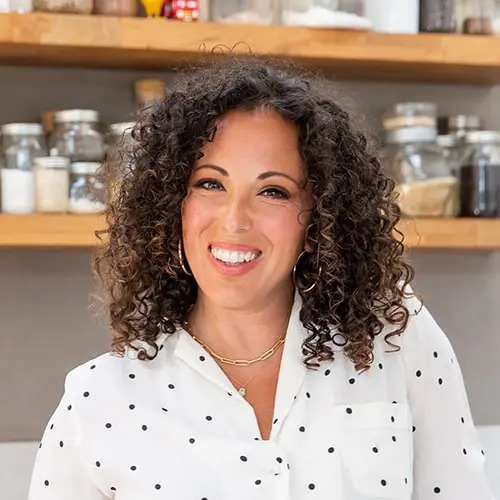Many of my patients are surprised to hear that I, too, grew up with the ubiquitous bottle of pink bubblegum flavored prescription syrup in the fridge each winter. Amoxicillin—it’s the go-to antibiotic of choice for everything from ear infections to strep throat or pneumonia in children everywhere. Trust me; I had my fair share! Back when I was growing up, we just didn’t understand the ramifications of repeat antibiotic use, so it seemed that one could rarely leave the pediatrician’s office without a prescription for one.
Antibiotics are only effective for bacterial infections, and won’t have any impact on viral infections such as the common cold. With the rise of antibiotic resistant infections, or so called “superbugs”, even the doctors prescribing these drugs have taken a muchmore judicious approach to using them. We now know that the risks of repeat antibiotic use during childhood are long-lasting and have been linked to increased risk of allergies, autoimmune diseases, diabetes, obesity and even ADHD later in life.
There are many situations where antibiotic use can be avoided. For instance, most urinary tract infections, ear infections, sore throats, and the weepiest of oozing red eyes can be treated safely and effectively by aggressively using the right herbs or natural treatments. —In fact, I’ve treated hundreds of these types of ailments in my own clinic with only natural medicines and have seen great success. . Even the dreaded diagnosis of “strep throat” can be treated with appropriate herbs by a trained professional. The overwhelming benefit of using a natural approach to these ailments is that the “good” bacteria in your gut stays protected. Additionally, you avoid the side effects that often come with antibiotic use, like bloating, diarrhea, constipation, fatigue, and loss of appetite.
Certainly, there are situations where antibiotics can be lifesaving–I personally owe my life to IV antibiotics used for a bad case of sepsis I experienced several years ago. And while ear infections and urinary tract infections almost never need to be treated with antibiotics, if you’re in pain, or have been up every night for a week with a sick, crying kid, and are at your wit’s end, you may wind up gladly accepting that prescription.
In cases of bacterial infection, antibiotics will do the job, but not without massive casualties among the beneficial flora in the gut that form our defense system.
Our digestive tract houses around 500 species and up to five pounds of bacteria that help preserve our health every day. We have trillions of bacteria populating our large intestines—in fact, their cells out-number our human cells; one could say that we are “more bacterial” than human. These tiny organisms are so critical to our survival, it’s like having another essential organ that you couldn’t live without! Beneficial (or probiotic) bacteria in our guts play a host of vital roles for our health:
Nutrition:
Intestinal bacteria actually synthesize essential nutrients like B12 and K2, or convert them from the food we eat into active forms. In fact, while we get some of our vitamin K2 from eating dark leafy veggies, up to 75% of it is made in the gut.
Studies have recently shown that some gut bacteria are able to produce the active methylated form of Folate (5-MTHF), a key component in things like brain function and mental health, cell division and DNA replication, and normal fetal development during pregnancy. Having adequate amounts of the right type of good bacteria can be a game changer for individuals with MTHFR mutations, who are notoriously at a disadvantage in producing adequate quantities of this essential nutrient.
Hormone Balance:
A healthy microbiome is an indispensable part of the process by which we maintain hormone balance. Specific bacteria produce enzymes that help us break down and metabolize our estrogen. Essentially, these bacteria work to flush hormones that have been used, and are ready for elimination, out of the body, making way for fresh new hormones to take their place.
If you have the wrong types of bacteria in your gut, then estrogens get reabsorbed and recirculated, setting the stage for estrogen dominance and associated symptoms such as infertility, PMS, low libido, cramps, heavy menstrual bleeding , and PCOS. This also makes us more susceptible to estrogen related cancers like breast and uterine cancer.
Without enough of the good guys, we are setting ourselves up for a toxic build-up of hormones that can lead to PMS, menopausal symptoms, or worse.
What is living in our gut strongly influences almost every conceivable aspect of our health. In fact, most people don’t know that symptoms like allergies, acne, depression, fatigue and autoimmune diseases often have digestive problems at their root.
Immunity and Respiratory Illness:
Our microbiome also supports our overall immunity. Approximately 70% of your immune system is located in your gut and the good bacteria are informing this at all times. Studies show that gut microbiota influences our immune system, both in the intestines, but also systemically.
The use of broad spectrum antibiotics, (and other factors like chemical exposure, diet, and environmental exposure) alter the makeup of our microbiome. Multiple studies report that this alteration can negatively influence the immune response in your airways leading to greater susceptibility to many allergic airway diseases, including seasonal rhinitis and asthma, as well as viral infections of the respiratory tract.
Acute respiratory tract infections are the leading cause of death in infants and young children worldwide, and while these can be bacterial in origin, the majority of them are caused by viral infections. Researchers believe that that the composition of the microbiome may affect the severity of viral infection in children.
Digestive Disorders:
Locally, in the gut, disruption of the balance in the microbiota (dysbiosis) has been associated with inflammation-linked disorders, like inflammatory bowel disease.
Metabolic Syndrome and Weight Gain:
A Danish study with 169 obese and 123 non-obese participants confirmed that people with lower amounts of good bacteria had higher body fat percentage, increased insulin resistance, higher markers of inflammation, and poor cholesterol balance. They also gained more weight over time.
Several days to a week of antibiotics will wipe out majority of the bacteria, both good and bad–decreased diversity and altered composition can be seen within 3-4 days. Even a single dose of Clindamycin (commonly prescribed for things like bacterial vaginosis or sinus infections) causes an enduring loss of 90% of normal microbial diversity.
Our intestines are somewhat like an apartment building—there is only space for so many tenants. You want to have primarily good tenants, who pay the rent on time, take care of the place, and like to keep tidy. But wiping out the majority of the tenants, both good and bad, leaves it as a toss-up in terms of who will take residency after you stop taking the antibiotic.
So, while bacterial counts in the gut start to recover within a week, studies show that the composition of the microbiome is significantly altered from what was present prior to treatment. And because antibiotics only work against bacteria, this leaves room for pathogenic yeast or fungal strains to gain a running head-start while you are taking the prescription. While yeast like Candida are a normal part of our healthy microbiome, they should only comprise a small percentage of a diverse population. When they start to overgrow, and run the show, a myriad of problems and increased production of toxins can disrupt our digestive health and also impact other body systems outside of the gut.
The good news is that we have a lot of influence over who we promote when it comes to rebuilding the good guys! If you must take antibiotics, here are a few things you can do to help protect your gut and immunity while taking them:
Foods
Avoid sugar, alcohol, dairy (except fermented), and gluten: These foods either contain proteins that are harder to digest across the board, or tend to feed yeast.
Eat probiotic fermented foods: sauerkraut, kim chi, any other fermented veggies such as beets or carrots, coconut kefir, kombucha, yogurt (preferably homemade and 24-hour).
Drink bone broth: collagen heals the gut and is also prebiotic (feeds the beneficial flora).
Eat Prebiotic foods: Prebiotics are fibers found in specific foods that are food for the beneficial flora. Jerusalem artichokes (sunchokes), raw dandelion greens, garlic, leeks, onions, jicama, Chicory root (which you can find in Dandy Blend beverage), asparagus, green bananas and plantains, cacao, burdock root, or foods high in resistant starch (such as cooked and cooled rice, legumes, or potatoes) are all foods with high prebiotic content. You can also take a prebiotic supplement, like Mega PreBiotic—start slow! Interestingly, these types of starches onlyfeed the beneficial flora, and not the “bad guys”.
Supplements
Butyrate: Part of the reason why prebiotics are so helpful is that they provide raw material for the good bacteria to ferment, producing short chain fatty acids.
Butyrate, one of the SCFA’s produced in this process, is the energy source of choice for the cells lining the colon and helps regenerate colonic mucosal membrane. It has several different actions that are cancer-preventative. Butyrate also fights inflammation in the gut. In fact, not having enough Butyrate can trigger or worsen ulcerative colitis, chron’s Crohn’s disease or colon cancer.
While most of our butyrate is produced by our healthy flora, grass-fed butter is also a great source of dietary butyrate, and, it is also available in supplement form. Generally, I recommend taking it for 2-4 weeks following antibiotic use.
Probiotics: The most important probiotic you can take during and after a round of antibiotics is actually a strain of yeast. Saccharomyces boulardii is a beneficial, non-pathogenic yeast that was first identified on lychee and mangosteen fruits in the tropics. While it may sound strange to intentionally put yeast into your digestive tract, S. Boulardii is a completely different species from the pathogenic candida species that are associated with digestive and other health problems. Besides increasing short-chain fatty acids (remember those from above? We want those!) that soothe the mucosal cells in the gut, these yeast are also stellar at treating and preventing diarrhea, and also boost secretion of IgA (immune agents) in the gut. They are helpful for treating C. Difficile infection, reducing inflammation in IBD, and help to prevent the formation of food-allergies. I recommend Designs For Health Floramyces, or Saccromycin DF by Xymogen. The dosage that I recommend in this case is 5-10 billion CFUs 3-4 times daily. It is important to start taking Saccharomyces Boulardii as soon as possible, as it can (and should) be taken during course of antibiotics to help prevent yeast overgrowth and calm inflammation. Since they only work on bacteria, antibiotics won’t kill the yeast. Keep taking it for 2-3 weeks after completing the antibiotic.
Generally, after the antibiotic is completed, I recommend adding in an additional Acidphilus/Bifidus containing probiotic blend for several weeks, such as Klaire Labs Therbiotic Complete.
Have you taken antibiotics and noticed health changes after taking them? Or, have you taken preventative measures like the ones above that you felt safeguarded your health? If so, what differences did you notice?
At the Reverse-Age Method, we believe in a holistic approach to perimenopause and beyond, that addresses the root causes of your symptoms (like insomnia, hot flashes, night sweats, erratic periods, fatigue, skin aging, weight gain, and brain fog)– to also slow the pace that your cells are aging. Whether it’s improving gut health, optimizing detox function, enhancing mitochondrial function, or building muscle mass, our comprehensive program has got you covered.
If you’re new here, be sure to check out our Blog Page for more insights and tips on how to thrive during perimenopause. Our blog is packed with practical advice, success stories, and the latest research to help you on your journey.
For more updates and community support, follow us on social media:
You May Also Like...
Endometriosis 101 Part 2: How I Help My Patients Dealing with Endometriosis
Check out "Endometriosis 101 Part 1: What Is this Condition & Why Is it Happening to Me?" HERE While functional…
A Functional Medicine Practitioner-Designed Postpartum Recovery Plan (For Mom & Baby)
It’s hard to believe my baby girl is coming up on 5 months old already! All the mamas out there know… the postpartum…
Whether you’re looking for help with your gut, your hormones, or both, our team of practitioners work together to treat the WHOLE you – guiding you to a healthier mind, body, and spirit day by day.



